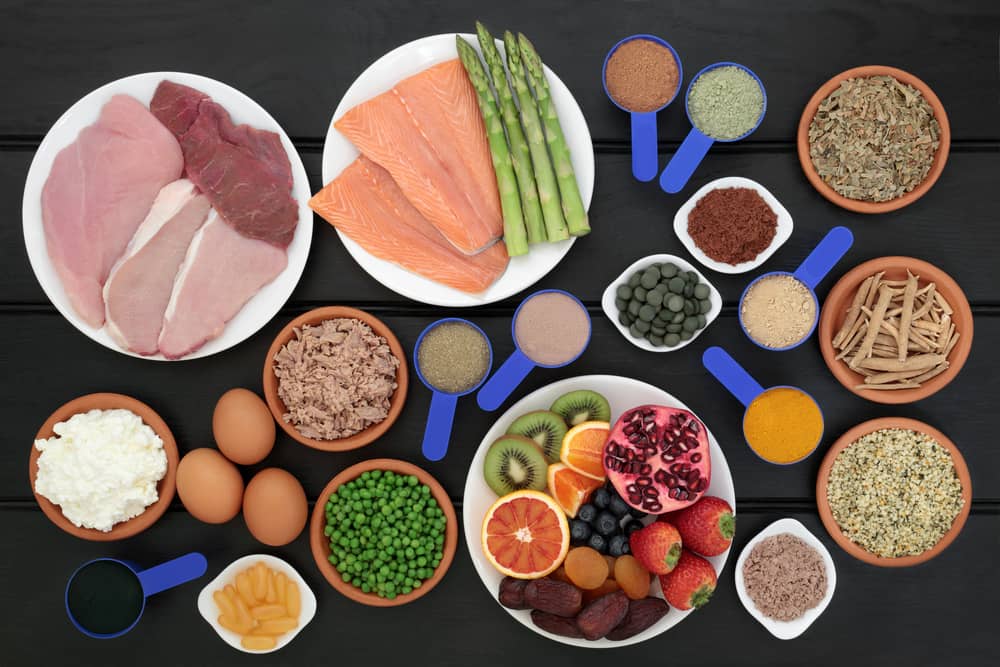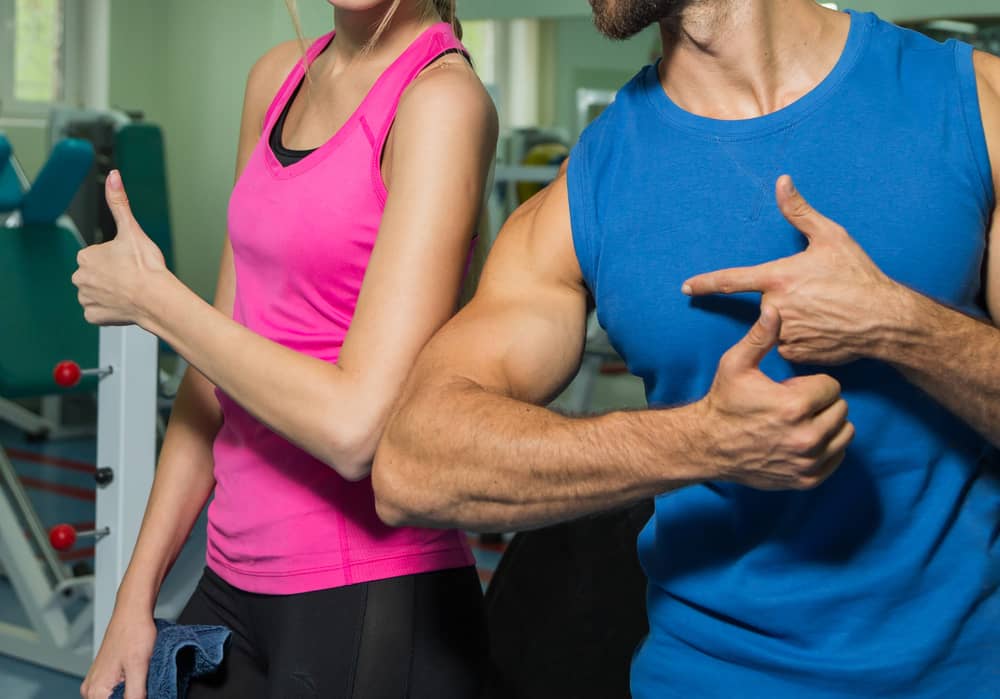Professional rowers usually have large, bulging muscles. And this observation is probably why most of us think a muscular body is what we end up with by rowing back and forth. But can indoor rowing make you bulky?
An indoor rowing session may recruit over 80% of your muscles. But neither the equipment nor the actual rowing exercise can give you bulky legs or shoulders. And it’s mainly because muscle building is unlikely without weight training, dietary changes, and other factors.
Perhaps, the best way to bust this myth is to understand better how rowing affects the body.
More importantly, let’s identify the fitness adjustments and physiological factors necessary to gain bulk.
Why Indoor Rowing Cannot Make You Bulky
We know indoor rowing is a full-body exercise that works your upper and lower body.
Specifically, each rowing stroke is 65-75% leg work and 25-35% upper body workout.
But just because rowing targets most of your muscles doesn’t necessarily mean it will lead to excessive bulkiness.
The first reason supporting this conclusion is that indoor rowing is a cardio exercise.
And cardio workouts focus more on toning and strengthening your muscles, not building muscle mass.
A study in 2014 also noted this effect among participants after doing an 8-week rowing machine training.
The second reason is that cardio exercises, like indoor rowing, target your slow-twitch or type I muscle fibres.
Recent research also concluded that rowing mainly activates this type of muscle.
And slow-twitch muscles are muscle fibres that support aerobic metabolism and fatigue resistance.
As a result, you get maximum endurance, not bulky muscles, from cardio workouts.
That also means for considerable muscle growth or hypertrophy to happen, you would have to do activities that work your fast-twitch or type II muscles instead.
Some examples of these activities are powerlifting, sprinting, jumping, and strength and agility training.
One thing common among these exercises is they require more and quicker force for proper execution.
And this muscle-building feature is not exactly a strong point of indoor rowing.
So, set those worries aside and continue your 30-minute rowing routine with total peace of mind.
Indoor rowing will not make you bulky, but it can surely burn calories, encourage weight loss, and improve your heart health.

Fitness Factors that Encourage Muscle Growth
Building muscles or hypertrophy is not something you can achieve by accident.
You’ll need a specially designed exercise routine and diet to achieve this.
Genetics, gender, and hormones are also contributing factors.
Let’s learn more about these to understand why mere indoor rowing cannot make you bulky.
Here are some essential things to know.
Mechanical damage and metabolic stress stimulate muscle growth.
I mentioned earlier that lifting weights and doing other power exercises are crucial in targeting your type II muscle fibres, resulting in hypertrophy.
But other things occur in the body, explaining why these activities build muscles.
When you lift a heavy weight, mechanical damage, known as micro tears, happens in your muscles.
And when this occurs, the body responds by sending blood and nutrition to the muscles for repair.
Once they heal and recover, the result is bigger muscles.
So, with regular and proper weight training, your body repairs more micro tears while you gain even more muscle mass.
Now, if weightlifting is part of your fitness routine, you’ve probably experienced that “burning” sensation or metabolic stress on your muscles, especially when doing higher repetitions.
What happens here is that as you keep working your muscles, metabolites, like lactate and hydrogen ions, begin to accumulate.
And this body reaction also promotes muscular hypertrophy.
Several studies have theories explaining how this happens exactly.
A study in 2019, for example, related metabolite accumulation with increased muscle activation.
And muscular growth occurs when you recruit more muscle fibres.
Researchers in 2013 also linked metabolite accumulation to cell swelling.
Specifically, as your muscles work hard during exercise, the cells get a signal to expand and grow to withstand the stress better.
This expansion and growth naturally lead to bulkiness.

Protein-rich diets play a crucial role in muscle building.
Rowing alone cannot make you bulky.
But pairing your indoor rowing exercise with strength training and a protein-rich diet can result in significant muscle growth.
But why protein and not carbs or fats? Because protein has amino acids, specifically leucine, which the body needs to repair and grow muscles.
And a study in 2001 even noted that exercise has a better muscle-building effect with the presence of dietary amino acids.
Now, your required daily protein intake for muscle-building depends on your body weight and physical activity.
But recent nutritional guideline generally recommends ~2.2 g of protein/kg of weight per day.
You then distribute your choice of protein-rich foods over four meals (about 0.55 g/kg/meal) for optimum muscle growth.
Natural hormones influence the body’s muscle growth potential.
The natural endocrine response of the body also helps in developing muscles. Here are some body-building hormones:
- Testosterone is the most vital male hormone for building muscles. The testicles and adrenal glands produce it.
- Growth hormone comes from the pituitary gland. Its role is to stimulate the liver to produce the muscle-building hormone IGF-1.
- Insulin growth factor is a hormone produced by the pancreas.
Strength and resistance training stimulates the release of testosterone and growth hormone.
A study in 2020 also noted that testosterone concentration depends on exercise type or intensity and duration of rest periods.
On the other hand, food intake, particularly carbohydrates and proteins, stimulates insulin release.
Exercise is also an insulin stimulant, and once stimulated, this hormone enables amino acids to start tissue repair and muscle building.
From this point of view, it’s clear that indoor rowing workouts cannot make you bulky.
Significant muscle building requires a more complex approach that involves proper exercise, diet, and hormone stimulation.

Some genetic factors or body types support faster muscle growth.
There are also factors beyond our control that build muscles. Gender is one good example.
Faster muscle growth is more pronounced in men.
And it is mainly because of their body structure, larger muscle mass, tighter joints, and higher testosterone levels.
Women can also build muscles. However, their naturally lower testosterone levels can limit the bulk they gain.
Moreover, they typically have lower calorie and protein intake to support massive muscle growth.
Body type is also another factor that influences your muscle growth rate. For example:
- Mesomorphic body types are more muscular and can grow muscles faster than others.
- Endomorphic body types are curvy people that can build muscle through strength training exercises.
- Ectomorphic body types are straight and slim. They are less likely to be muscular, but they can do resistance training to improve muscle strength.
Conclusion
Indoor rowing cannot make you bulky, even if this exercise involves most of your body muscles.
It does, however, tone your muscles as you burn calories, lose weight, and boost your cardiovascular fitness.
More importantly, building muscles is an intentional fitness outcome, and proper exercise and diet are necessary to gain considerable bulk.
So, don’t worry about losing your feminine curves or natural body shape from rowing.
Having an indoor rowing machine at home can give you several health benefits without making you look out of proportion.
Keen to learn more about this exercise equipment? These rowing machine facts and FAQs might have the info you need.
Related Questions
1. Can you lose belly fat on a rowing machine?
An indoor rower lets you burn calories and tone your muscles. In turn, you also reduce your body fat percentage and belly size. But a flatter midsection needs more than a good cardio machine. Burning belly fat will be more successful when paired with efficient rowing, a healthy diet, and better lifestyle habits.
2. Is a 20-minute rowing machine HIIT a good morning routine?
A 20-minute high-intensity rowing workout is effective for burning calories and getting cardio benefits. And you can do it whenever you can, morning or night. What’s important is that you do your indoor rower routine regularly.
- Foldable vs Traditional Reformers: Which One’s Right for You? - 2 July 2025
- Elliptical Cross Trainer vs Exercise Bike: Which is Better? - 24 June 2025
- How Do the Different Massage Gun Attachments Work? - 23 June 2025
